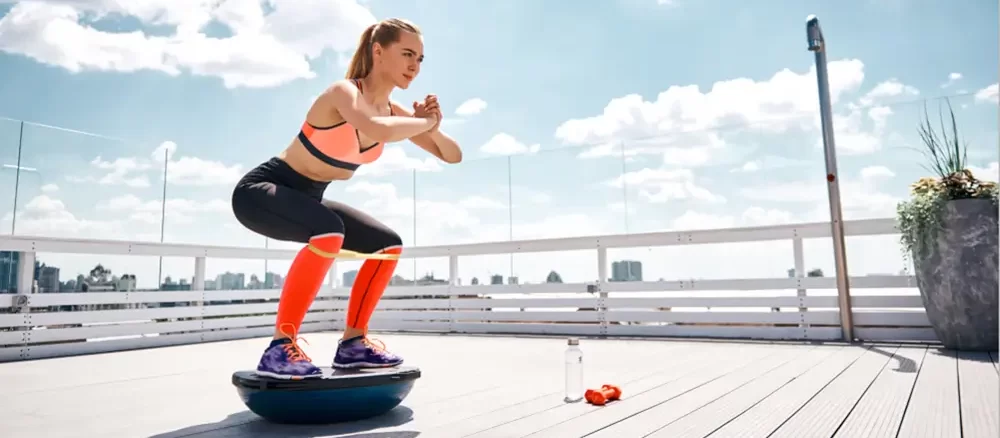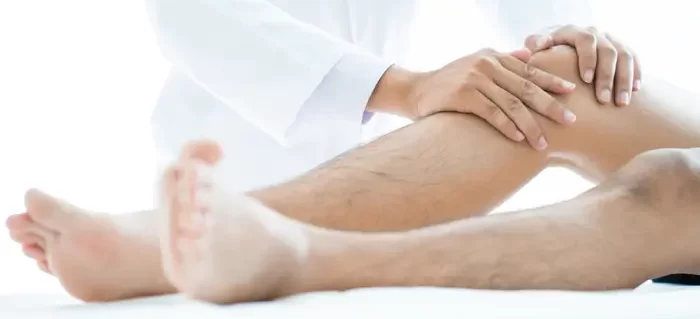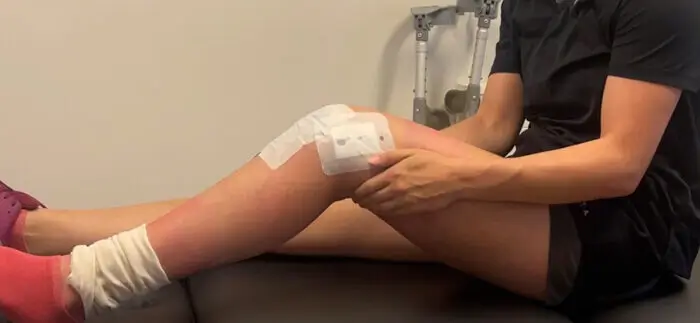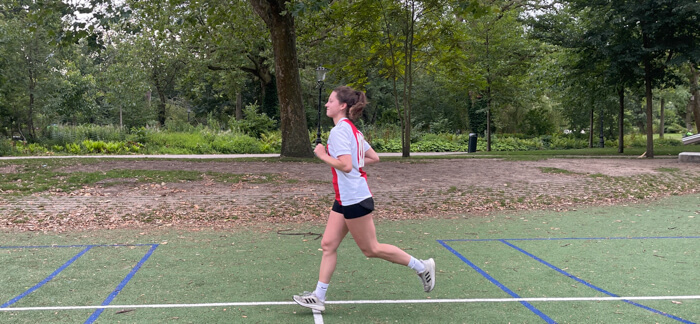
Starting running after anterior cruciate ligament surgery

Written by Michael de Levie
One of the oldest and most fundamental forms of exercise is running. Consequently, many people run hard in order to improve their health up to standard. Not surprisingly, therefore, the question "When can I run again?" is one of the most frequently asked questions after anterior cruciate ligament surgery. As a rehabber, you look forward to the moment when you can run again and your physical therapist gives the green light to do so. Central to this blog, then, is the question: When can you run again after a anterior cruciate ligament surgery start running and what should you train for?
Training to be able to run again after anterior cruciate ligament surgery.
The foundation for (almost) every sport is running. At soccer, handball and basketball many miles are covered per race. In addition, running is extremely popular and many people put on their running shoes every week to go for a run. Running is something everyone takes for granted, and the greater the disappointment that it is no longer possible after an anterior cruciate ligament injury. The exercises during anterior cruciate ligament rehabilitation are largely focused on learning a quality running pattern.
What is running?
Besides walking and jumping, running is a basic human exercise pattern. Anyone can do it from young to old. In running, you swing one leg up and push off with the other leg. Here it is important that the body is actively stabilized by muscles. In addition, energy must be generated to make strides. A push-off is an acceleration moment and landing is a form of deceleration. When decelerating, energy is wasted and the trick is to limit this as much as possible. In running, the different forms of landing often take center stage as well. Consider the forefoot, midfoot and heel landing. All three forms have pros and cons. As we take a lap around the park, we notice that almost everyone has their own way of running. No running pattern is the same. With each landing comes 6-8 times body weight on the knee. Add to that the number of steps you take on a 10-kilometer lap. It's probably not for nothing that running is one of the most injury sensitive sports is. Apparently there's more to it than we think, but again, this is a topic for another time.
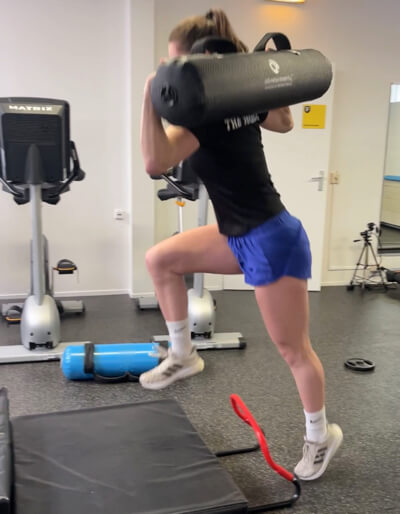
Why can't you just start running
After an anterior cruciate ligament injury and/or surgery is je knie stijf en gaat buigen en strekken moeizaam. Door de zwelling in de knie neemt de kracht af. Met name de quadriceps heeft het zwaar te verduren. In het kapsel van de knie zitten sensoren die spieren vertellen wat ze moeten doen via ingewikkelde reflexbogen. De zwelling drukt op het kniekapsel en stoort (subtiel) de sensoriek. De zwelling in de knie houdt meestal lang aan waardoor de sensoriek of anders gezegd de software voor het aansturen van de spieren veranderd. Het gevolg is een asymmetrisch looppatroon. Voor hardlopen is symmetrie belangrijk, maar ook voldoende spierkracht om te kunnen accelereer en decelereren. De spieren moeten de impact van de landing, 8 keer het lichaamsgewicht, kunnen opvangen. Behalve kracht is hierbij een goede samenwerking tussen spieren essentieel om dit krachtenspel te reguleren. Dit trainingsproces kost tijd en maakt duidelijk dat hardlopen en onvoldoende getraindheid niet samengaan.
NB. the graft choice also has an impact. A patella or quadriceps tendon negatively affects quadriceps strength while the hamstring is an important muscle during running with swing leg retraction and deceleration forms.
Running in anterior cruciate ligament rehabilitation
The swelling should come out of the knee as soon as possible. This can be done by adjusting enough load to load capacity, cycling a lot as soon as it is allowed and patience. The swelling is part of the healing process. The function of the knee must also be restored. The knee must be able to bending and stretching. This requires full extension and flexion of more than 120 degrees. The strength of the quadriceps, hamstrings and calf muscles must be trained in order to run.
Functional training
Training may include leg press, leg extension and curls, but functional exercises are especially important. Functional training means that the exercises are close to actual movement patterns from everyday life and/or sports. Here you can think of squats that mimic sitting and getting up from a chair or marching in place that simulate the knee's engagement with running. These types of exercises require a much greater effort from the brain. Pressure is needed to reprogram the software so that muscles learn to work together again.
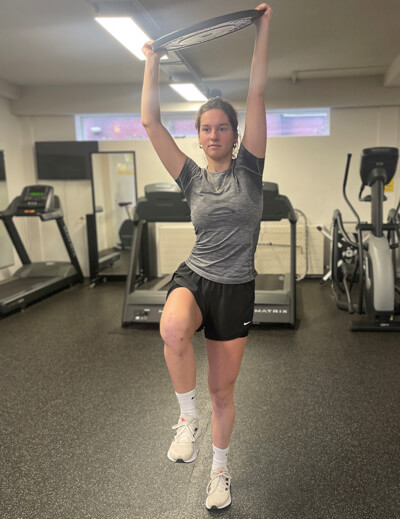
New terms like hiplock
Meanwhile, through improved cameras and computer software, we have become better at analyzing running patterns. The entire movement chain can be specifically analyzed, which has led us to new insights. Today, anterior cruciate ligament rehabilitation focuses on strengthening the entire body. With this development, new exercises and training forms have also emerged. Terms you didn't hear before, but are now central to most cruciate ligament rehabilitation are hiplock, swing leg retraction, ankle stiffness and trunk stability.
De nieuwe oefenvormen versterken de gehele beweegketen en maakt het lichaam weerbaarder tegen verstoringen tijdens een sprint, spring en/of wenden en keren. Het zou fantastisch zijn als het aantal voorste kruisband letsels afneemt door onder andere meer aandacht te schenken aan het hardlooppatroon en het versterken van de beweegketen.
Sample running exercises.
Summary
Starting running during anterior cruciate ligament rehabilitation is not a given. Regular and proper training must be done beforehand. The insights and techniques (video analysis and training methods) have made a big leap in recent years. This raises the demands we place on cruciate ligament rehabilitation. This benefits the quality of recovery, but "when can you start running?" is a question that has remained unanswered in this blog. In the blog: 6 criteria for safe running after anterior cruciate ligament surgery, you can read what requirements you must meet.
If you have any questions or comments after reading this blog please leave your comment/question below this blog.


